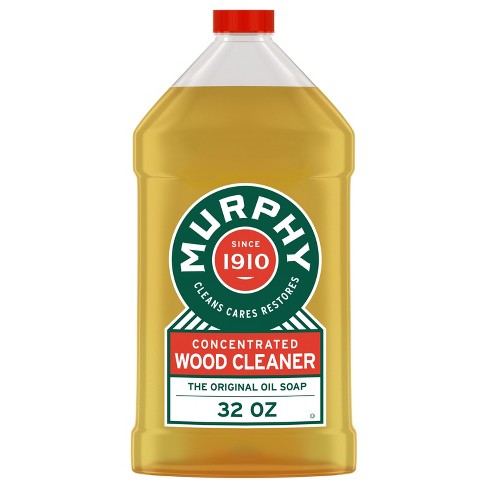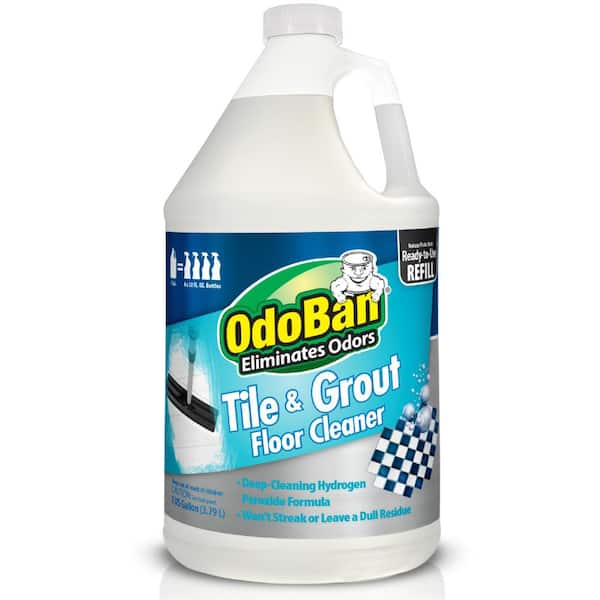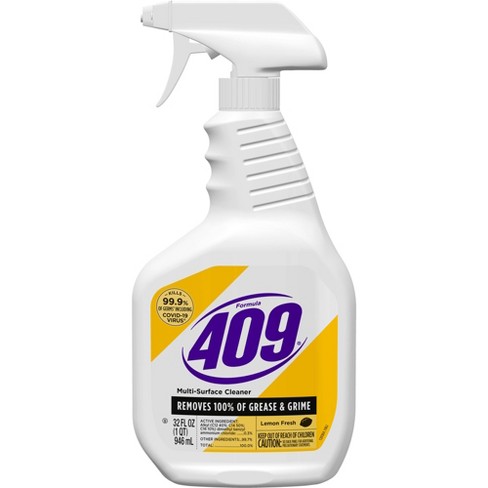Wood cleaner effectively removes dirt and grime from wooden surfaces, preserving their natural beauty and helping maintain the wood’s longevity.
The wood cleaner is essential for keeping wooden surfaces clean and well-maintained. Regular cleaning prevents the buildup of dirt and grime, which can cause wood to deteriorate over time. A high-quality wood cleaner not only cleans but also protects the wood, enhancing its natural appearance.
It is suitable for various wooden items, including furniture, floors, and decks. Using a wood cleaner can make the cleaning process easier and more efficient. Always choose a cleaner that is safe for your specific type of wood to avoid damage. Proper maintenance with a good wood cleaner extends the life and beauty of wooden surfaces.
Introduction To Wood Care
Caring for wood surfaces is essential. Proper maintenance keeps wood looking new. Wood is a natural material that needs special care. Neglecting wood can lead to damage and loss of beauty.
Why Wood Needs Special Attention
Wood is sensitive to moisture and temperature changes. If not cared for, it can warp or crack. Regular cleaning and maintenance help preserve wood’s integrity.
- Moisture Control: Wood absorbs moisture, leading to swelling or warping.
- Temperature Fluctuations: Extreme temperatures can cause wood to crack.
- Dust and Dirt: Regular cleaning prevents dust buildup.
The Impact Of Neglect On Wood Surfaces
Neglecting wood surfaces can cause serious damage. Dirt and grime can build up over time, leading to a dull and unattractive appearance.
Without proper care, wood can suffer from:
- Scratches: Everyday use can leave marks and scratches.
- Stains: Spills can cause permanent stains if not cleaned.
- Fading: Sunlight can fade wood, reducing its natural beauty.
Using a good wood cleaner can prevent these issues. It keeps wood looking fresh and new.
Types Of Wood And Their Cleaning Needs
Wood cleaners are essential for maintaining the beauty of your furniture. Different types of wood have unique cleaning needs. Understanding these needs helps keep your wood surfaces pristine.
Hardwood Vs. Softwood
Hardwood comes from deciduous trees like oak and maple. It is dense and durable. Cleaning hardwood requires a gentle approach. Use a soft cloth and a cleaner designed for hardwood. Avoid excess water to prevent damage.
Softwood comes from coniferous trees like pine and cedar. It is less dense than hardwood. Softwood is more prone to scratches and dents. Use a mild cleaner and a soft cloth. Avoid abrasive materials to keep the surface smooth.
| Type of Wood | Characteristics | Cleaning Tips |
|---|---|---|
| Hardwood | Dense and durable | Use soft cloth, avoid excess water |
| Softwood | Less dense, prone to scratches | Use mild cleaner, avoid abrasives |
Varnished Vs. Unvarnished Surfaces
Varnished surfaces have a protective layer. This layer makes cleaning easier. Use a gentle wood cleaner. Avoid harsh chemicals that can strip the varnish. A damp cloth is often sufficient.
Unvarnished surfaces lack a protective layer. They absorb liquids more easily. Clean these surfaces with a specially formulated cleaner. Be sure to dry the surface immediately. This prevents water damage.
- Varnished Wood:
- Use gentle cleaner
- Avoid harsh chemicals
- Damp cloth is sufficient
- Unvarnished Wood:
- Use specially formulated cleaner
- Dry immediately after cleaning
- Prevents water damage
Choosing The Right Wood Cleaner
Wood is a beautiful material that adds warmth and character to any space. But maintaining its beauty requires the right care. One important aspect of wood care is choosing the right wood cleaner. With so many options available, it can be overwhelming to decide which one to use. Here, we break down the types of wood cleaners to help you make an informed decision.
Chemical Vs. Natural Cleaners
Choosing between chemical and natural cleaners is crucial. Chemical cleaners are effective at removing tough stains and grime. They often contain strong ingredients that can cut through dirt quickly.
Natural cleaners, on the other hand, use plant-based ingredients. They are safer for the environment and often have fewer harsh chemicals. These cleaners are gentle on wood and safe for use around pets and children.
| Type | Pros | Cons |
|---|---|---|
| Chemical Cleaners |
|
|
| Natural Cleaners |
|
|
Store-bought Vs. Diy Solutions
There are many store-bought wood cleaners available. These products are convenient and often come with specific instructions. They are formulated to be effective and safe for various types of wood.
DIY solutions are another option. These can be made with ingredients you already have at home. Common DIY wood cleaner ingredients include vinegar, olive oil, and essential oils.
- Store-Bought Solutions
- Convenient and ready to use
- Often tested for safety
- DIY Solutions
- Cost-effective
- Customizable to your needs
Choosing the right wood cleaner depends on your needs and preferences. Whether you prefer chemical, natural, store-bought, or DIY solutions, the key is to keep your wood looking its best.

Credit: www.homedepot.com
Pre-cleaning Tips For Wood Surfaces
Wood surfaces need special care to keep their beauty. Before using a wood cleaner, follow these pre-cleaning tips. This ensures your wood surfaces stay in top condition.
Dusting: The First Step
Dusting is the first step in cleaning wood surfaces. Use a soft, dry cloth for dusting. Microfiber cloths work best as they trap dust effectively. Avoid using rough materials which can scratch the wood.
- Use a microfiber cloth.
- Gently wipe in the direction of the wood grain.
- Avoid using water at this stage.
Regular dusting prevents dirt build-up. It also keeps the surface smooth and shiny.
Assessing The Wood’s Condition
Assessing the wood’s condition is crucial before deep cleaning. Check for any signs of damage or wear. Look for scratches, stains, and discoloration. Identifying these issues early helps in choosing the right cleaning method.
- Inspect the surface for scratches.
- Check for stains and discoloration.
- Note any areas with visible damage.
If you find any damage, use appropriate repair techniques. For light scratches, use a wood polish or touch-up marker. For deeper damage, professional help may be needed.
Step-by-step Cleaning Guide
Keeping your wooden surfaces clean enhances their beauty and lifespan. Follow this simple guide to ensure your wood looks its best.
Applying The Cleaner
Begin by selecting a high-quality wood cleaner. Shake the bottle well. Pour a small amount onto a soft cloth. Ensure the cloth is damp, not soaked. Gently apply the cleaner to the wood surface.
Gentle Scrubbing Techniques
Use a soft-bristle brush for scrubbing. Move in the direction of the wood grain. This prevents scratches and preserves the wood’s natural beauty. Apply gentle pressure to remove dirt and grime.
Rinsing And Drying
After scrubbing, rinse the wood with a damp cloth. Wipe off any remaining cleaner. Ensure no residue is left behind. Finally, dry the wood with a clean, dry towel. This prevents water spots and maintains the wood’s shine.
| Step | Action | Tools Needed |
|---|---|---|
| 1 | Apply Cleaner | Soft Cloth, Wood Cleaner |
| 2 | Scrub Gently | Soft-Bristle Brush |
| 3 | Rinse and Dry | Damp Cloth, Dry Towel |
- High-quality wood cleaner: Essential for effective cleaning.
- Soft cloth: Prevents damage to the wood.
- Soft-bristle brush: Ideal for gentle scrubbing.
- Clean, dry towel: Ensures a spotless finish.

Credit: www.behr.ca
Advanced Techniques For Stubborn Stains
Advanced wood cleaning requires special skills and knowledge. Some stains are hard to remove. Using advanced techniques can help. Below are some tips to tackle stubborn stains on wood surfaces.
Removing Water Rings
Water rings on wood can be tough. They can spoil the look. Here’s a simple method to remove them:
- Place a clean cloth over the water ring.
- Set your iron to a low setting.
- Gently iron over the cloth for a few seconds.
- Check the stain. Repeat if needed.
This method works well for fresh water rings. For older stains, try using a mixture of baking soda and water. Rub gently with a cloth.
Dealing With Ink And Grease
Ink and grease stains are harder to remove. They can penetrate deep into the wood. Follow these steps to tackle them:
- Mix equal parts of vinegar and water.
- Dip a cloth into the mixture.
- Rub the stain gently.
If the stain persists, use a paste made of baking soda and water. Apply the paste to the stain. Let it sit for 10 minutes. Wipe off with a damp cloth.
For grease stains, sprinkle cornstarch on the stain. Let it sit for a few hours. Vacuum or brush off the cornstarch. Repeat if needed.
| Stain Type | Solution |
|---|---|
| Water Rings | Iron over cloth |
| Ink Stains | Vinegar and water mixture |
| Grease Stains | Cornstarch |
These techniques can help keep your wood surfaces clean and beautiful. Regular maintenance is key. Always use gentle methods first. Avoid harsh chemicals to protect the wood.
Protecting Wood Post-cleaning
Wood surfaces need care after cleaning. Protecting wood ensures its longevity and beauty. The right post-cleaning methods can make a big difference.
Polishes And Waxes: A Shield For Wood
Using polishes and waxes creates a shield on wood surfaces. This shield protects against moisture and dust. Apply a small amount of polish or wax. Use a soft cloth to spread it evenly.
Different types of wood need different products. Choose the right one for your wood type. Here is a table to help:
| Wood Type | Recommended Product |
|---|---|
| Oak | Beeswax Polish |
| Maple | Carnauba Wax |
| Cherry | Liquid Polish |
Regular Maintenance Routines
Keeping wood looking good requires regular maintenance. Follow these routines:
- Dust weekly with a soft cloth.
- Use a gentle cleaner monthly.
- Reapply polish or wax every three months.
Regular checks help spot any damage early. Fix small issues quickly to prevent bigger problems.
Here is a simple routine to follow:
- Dust the wood with a microfiber cloth.
- Check for any scratches or dents.
- Apply a gentle wood cleaner.
- Buff the surface with a soft cloth.
- Apply polish or wax if needed.
By following these steps, your wood will stay protected and beautiful.
Common Mistakes To Avoid
Cleaning wood can seem easy, but mistakes can damage your furniture. Learn about common errors and how to avoid them. This guide will help protect your wood surfaces.
Overcleaning: The Hidden Danger
Overcleaning can harm your wood surfaces. Too much cleaning wears down the finish. This exposes the wood to damage and moisture.
You don’t need to clean wood daily. A weekly or bi-weekly routine is enough. Use a soft cloth to dust and polish gently. Avoid scrubbing too hard or too often.
Using The Wrong Tools And Solutions
Using the wrong tools and solutions can damage wood. Always use soft, non-abrasive cloths or sponges. Hard brushes or rough pads can scratch the surface.
Check the cleaner before use. Some solutions contain harsh chemicals. These can strip the wood’s finish or cause discoloration.
| Do | Don’t |
|---|---|
| Use a soft cloth | Use hard brushes |
| Choose gentle cleaners | Use harsh chemicals |
| Test on a small area first | Apply cleaners directly |
Follow these tips to keep your wood surfaces looking great. Protect your investment with the right cleaning methods.
Faqs On Wood Cleaning
Cleaning wood can be tricky. Below we answer common questions about wood cleaning.
Can I Use Vinegar On All Wood Types?
Vinegar is a popular cleaner. But it is not suitable for all wood types. It can damage certain finishes. Always test a small area first.
| Wood Type | Vinegar Safe? |
|---|---|
| Hardwood | No |
| Softwood | No |
| Finished Wood | No |
| Unfinished Wood | Yes |
How Often Should Wood Furniture Be Cleaned?
Clean wood furniture regularly. Dust weekly to keep it shiny. Use a wood cleaner every month.
- Weekly: Dust with a soft cloth.
- Monthly: Use a suitable wood cleaner.
- Yearly: Polish to maintain the finish.
Follow these steps to keep your wood furniture beautiful. Proper care prevents damage.

Credit: vermontnaturalcoatings.com
Frequently Asked Questions
What Is The Best Thing To Clean Wood With?
The best thing to clean wood is a mixture of mild dish soap and water. Use a soft cloth to wipe.
What Is The Best Substance To Clean Wood With?
The best substance to clean wood is a mixture of mild dish soap and water. Use a soft cloth to wipe.
Is Vinegar A Wood Cleaner?
Yes, vinegar can clean wood. Dilute it with water to avoid damage. Always test on a small area first.
Do It Yourself Wood Cleaner?
Mix equal parts water and vinegar. Add a few drops of essential oil. Spray and wipe with a soft cloth.
Conclusion
Choosing the right wood cleaner ensures your furniture stays beautiful and lasts longer. Always opt for eco-friendly, effective products. Regular maintenance with the right cleaner can keep your wood surfaces looking their best. Enjoy the lasting beauty and elegance of well-maintained wood in your home.




